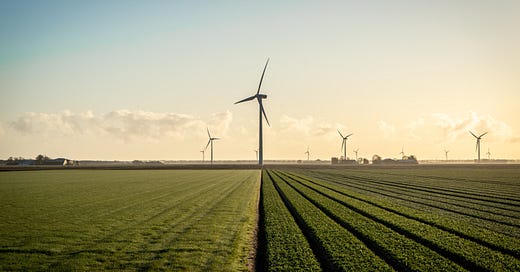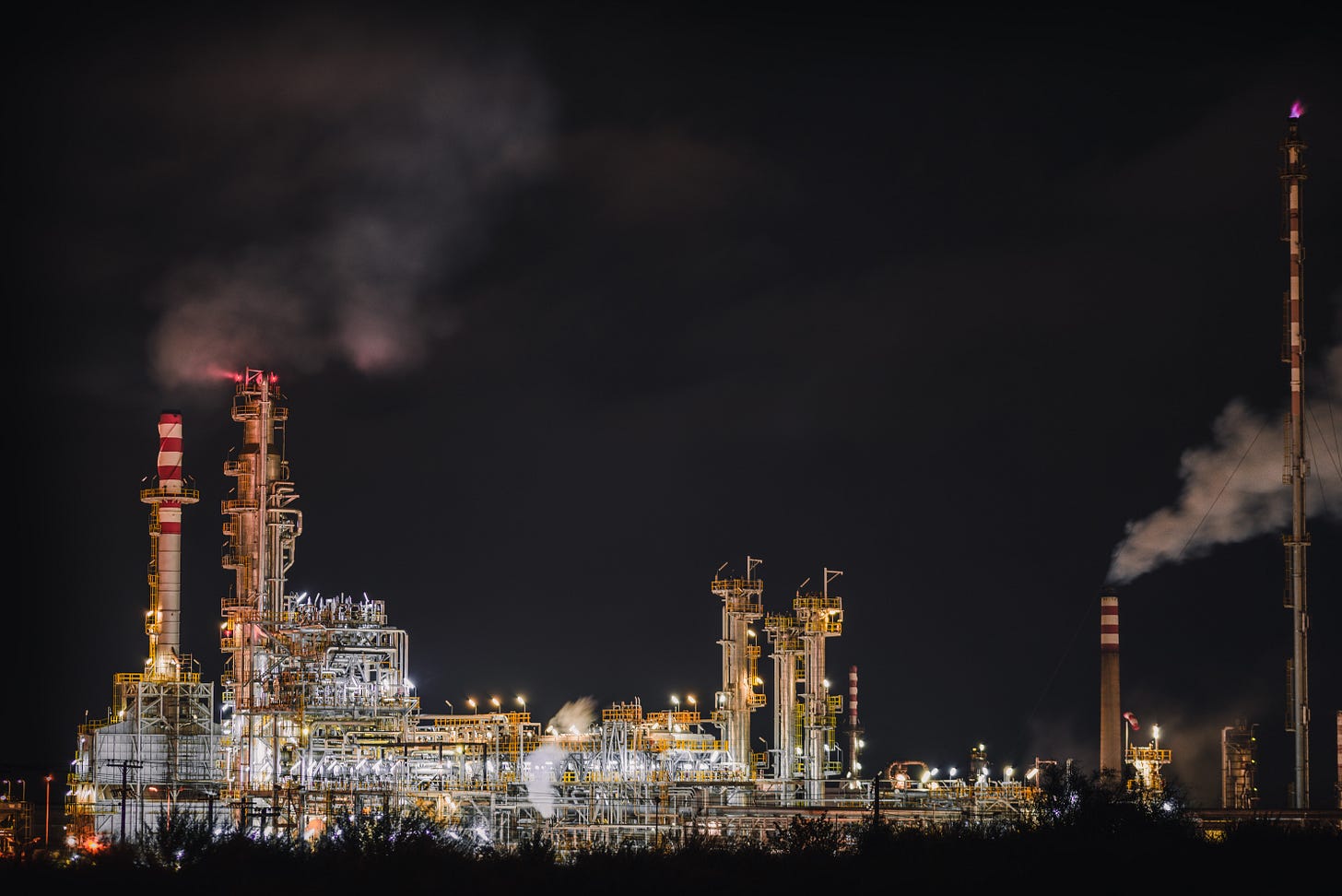Welcome to Planet Days, a five-minute roundup of the latest climate news and what it means for our Planet. If this was forwarded to you, smash that subscribe button:
Last week, rains triggered fatal floods in Vietnam, Democrats continued to tweak (weaken) their spending bill, and storms again threatened the Pacific Northwest and British Columbia
In case you missed it, here’s what else happened around the Planet:
Monday, November 29
Omicron throws off oil market
The newest COVID-19 strain is scaring oil traders and producers. After the World Health Organization labeled omicron a “variant of concern” on Friday, the oil market saw its biggest one-day crash since the beginning of the pandemic, with global prices dropping 10% over the weekend.
By Monday prices rebounded, but some are still concerned: Shutdowns last year caused prices to drop briefly into the negative, meaning producers essentially paid traders to take oil off their hands. Any serious shutdowns and travel restrictions brought on by omicron could have a similar effect (and swing the price of gas). MarketWatch has the latest.
Tuesday, November 30
The PR firms that work for the bad guys
Ever wonder where terms like “clean coal” or “carbon footprint” came from? A new report finds that in recent years, fossil fuel companies hired a slew of PR agencies to shape the narrative around climate change.
The report explains how agencies came up with phrases to emphasize personal responsibility for climate change and divert blame from the companies perpetuating the climate crisis — all while Big Oil expanded production. Grist has more.
Record-breaking 2021 hurricane season ends
Another Atlantic hurricane season is in the books. Though it wasn’t as crazy as last year, this season saw 21 named storms and seven hurricanes, which is still more active than normal (the annual average is 14 named storms).
Headlined by Hurricane Ida — which, at $65 billion, is fifth-most expensive hurricane on record — the 2021 hurricane season was one of the most expensive, with Tropical Storms Elsa, Fred, and Nicholas each costing more than a billion dollars each.
These damages are likely a view into the future. A new study finds Atlantic hurricanes are becoming more frequent and destructive. And another study finds that Asia’s tropical cyclones could double their destructive power by 2100. CNN covers the end of the season.
What a rainy Arctic means for the Planet
The climate crisis is particularly brutal in the Arctic, which sees more temperature rise than any other part of the Planet. All that extra heat is throwing its weather out of whack: New research finds that the Arctic could see more rainfall than snow as early as 2050 — 20 years earlier than previously thought.
More rain means more melting, which drives global sea level rise, as well as more permafrost melt, which releases methane, a greenhouse gas that heats up the Planet. The rain also means less snow cover, leaving a dark terrain to absorb even more heat and triggering a disastrous feedback loop. TIME has more.
Wednesday, December 1
How climate change is shifting rainfall in the US
It’s not just the Arctic with out-of-whack rainfall. This week, USA TODAY released a series of articles on its year-long project, Downpour, which analyzed more than a century of U.S. rainfall records.
In general, reporters found that regions East of the Rockies are seeing more rainfall and in more intense bursts, while Western regions are drying up, waiting longer than ever between rains. Here are other key findings:
In the last three years, more than half of the areas studied had their wettest periods on record.
In that same period, eight states, including five in the West, had at least three record-dry years.
Many cities’ outdated sewer systems can’t handle extreme rain, with lower income families and communities of color bearing the brunt sewage backups.
Mudslides are a growing threat out West, with 6.5 million acres exposed to the hazard — double the area from just three years ago.
And in case it wasn’t evident, climate change is fueling this whiplash between extreme rainfall and drought. Read the series from USA TODAY.
The complicated roots of Madagascar’s food crisis
But not everything is climate change’s fault. That’s the takeaway from World Weather Attribution’s new research on Madagascar's drought and famine.
Some initially blamed climate change for the drought, Madagascar’s worst in four decades. But researchers say it was likely a random weather quirk. As for the food crisis, researchers point to widespread poverty, a dependence on rain-fed agriculture, and the economic fallout from COVID-19.
"Climate change is a threat multiplier, but with this particular drought it was more the natural rain variability, COVID, and the very high vulnerability that came together," WWA co-head Frederick Otto told Thomson Reuters Foundation.
Renewable energy booms but still falls short
Let’s round out the week with some good news. Despite COVID-19, it’s been another record year for renewable energy, according to a new International Energy Agency report.
The Planet added a record 290 gigawatts of renewable power capacity this year, passing the previous all-time high set in 2020. Not only that, but renewables are projected to make up 95% of new power generation between now and 2026.
But there’s a catch. Policy hurdles, raw material shortages, and rising electricity costs will slow the transition to renewables, which needs to speed up to reach global net-zero targets by 2050. CNBC has the story.
Bonus
The climate movie we’ve all been waiting for
Looking for a climate movie to watch with the family this holiday? “Don’t Look Up,” with Leonardo DiCaprio and Jennifer Lawrence headlining a star-studded cast, is the perfect candidate, writes Earther.
The movie — a disaster comedy about a comet that’s barreling toward Earth — parallels the world’s response to climate change. In other words, ignore the warning signs and delay action. Watch the trailer, and catch it in theaters December 10 or on Netflix December 24.
Have a great week,
Brandon and Sam







